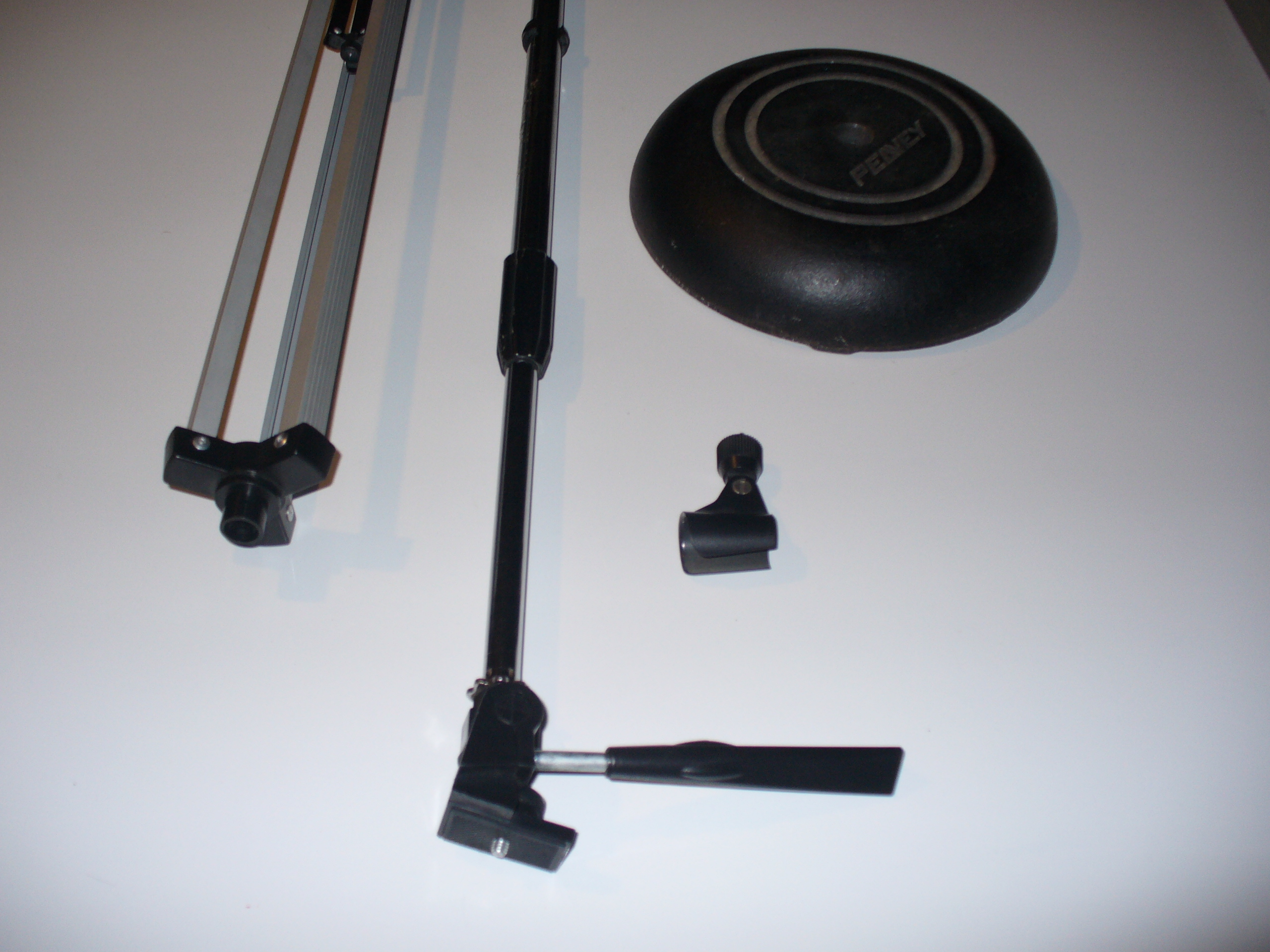My wife’s cousin, the break-dancing radiologist, broke the microphone clip off my mic stand while singing karaoke last Thanksgiving. I had another micropohone clip and replaced it so we could continue with karaoke, but I decided to keep the broken pieces of the old clip for the junk box because you never know, it might come in handy some time.
I had forgotten about it for a few weeks but eventually came across the pieces of the mic clip. I noticed that the clip, when it broke, had sheared off flush with the top of the cap that screws on to the mic stand and in the center of the cap was a hole. I’m not sure why this hole was manufactured through the microphone clip…maybe to allow air to escape while screwing it onto the mic stand. Anyway, the hole meant that I could put a screw through it and attach it to something.
A while back I bought one of those cheapo Emerson 50mm telescopes from Walgreens. The tripod for this telescope is dreadful. It’s darned near impossible to aim the telescope at anything but the brightest magnitude objects like Jupiter or the Moon because the pan and tilt movements tend to stick. And when you finally get the telecope pointed at your object, the tripod is so light that even a mild breeze will cause the image to wobble.
I decided to check and see how the telescope mount was connected to the tripod, and sure enough it was connected by a single screw. Then I removed the telescope mount from the tripod. In this article I’ll demonstrate how I made the mic stand into a camera monopod / camera boom.
You can often find these flimsy aluminum tripods at Goodwill (wait for the colored tag half price sales), Salvation Army, or other secondhand thrift shops, evidently because people end up getting a better tripod for their telescope.

















